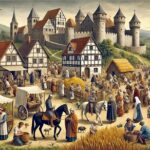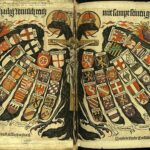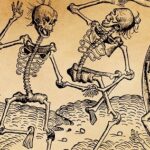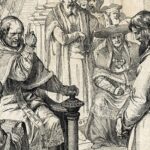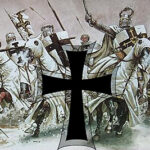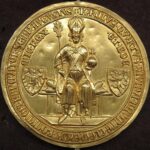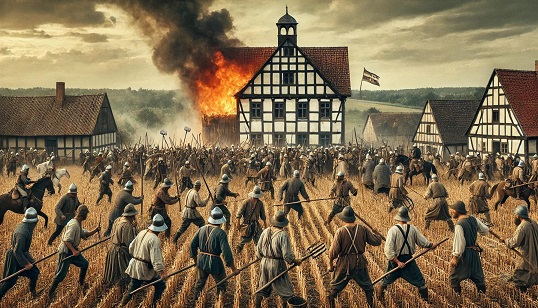
When we think of medieval Germany, we often picture armored knights, towering castles, and devout monks. But far below the ramparts, in the fields and villages, lived a class with little wealth but immense numbers: the peasants. And while many were obedient and resilient, others rebelled—sometimes violently—against the crushing weight of taxes, tithes, and injustice.
Peasant revolts in the Middle Ages weren’t isolated tantrums. They were expressions of social unrest, economic desperation, and a growing sense of injustice in feudal society. Though rarely successful, these uprisings shook the foundations of German principalities and echoed across Europe.
Let’s explore the roots, realities, and results of these medieval revolts—and what they reveal about the people history often forgets.
Life as a Peasant in Medieval Germany
Most Germans in the Middle Ages were peasants. Life was tough:
- Serfs were legally bound to the land, unable to leave without permission.
- They owed rent, labor, and taxes to their lords.
- In addition, they paid a tithe (10%) to the Church.
- Famine, war, and plague regularly threatened survival.
While many peasants found pride in their land and family, others simmered under what they saw as unfair burdens and abuse. When oppression reached a breaking point, rebellion followed.
Early Uprisings and Local Conflicts
Peasant unrest wasn’t new by the late Middle Ages. As early as the 11th and 12th centuries, small-scale revolts broke out:
- In Saxon regions, peasants fought against tax hikes and forced military service.
- In southern Germany, land disputes led to local rebellions.
- Some townspeople allied with peasants against corrupt nobles.
These early revolts were usually suppressed quickly, but they laid the groundwork for more organized and widespread uprisings later on.
The 14th Century: Tension Builds
The Black Death (1347–1352) had killed millions and destabilized feudal systems. With fewer workers, labor became more valuable—but many lords tried to reinstate old obligations instead of offering fairer terms.
- Enclosures (privatizing common lands) increased.
- Peasants lost traditional grazing and farming rights.
- Inflation and famine made life worse.
These pressures led to resentment—and resistance.
The Rhenish and Swabian Uprisings (1470s–1490s)
By the late 15th century, local revolts grew more coordinated:
- In the Rhenish regions, peasants demanded tax relief and fairer justice.
- In Swabia, uprisings broke out over land rights and feudal abuse.
These movements introduced more organized tactics:
- Peasant bands formed alliances.
- Demands were written in formal declarations.
- Religious rhetoric was used to justify resistance.
Though most were crushed, they signaled a shift: peasants were no longer just revolting—they were forming ideologies of justice.
The Bundschuh Movement
Named after the peasant’s tied shoe, the Bundschuh became a symbol of rebellion in southwestern Germany during the late 15th and early 16th centuries.
Bundschuh movements:
- Called for the abolition of serfdom.
- Opposed excessive taxation and corrupt local courts.
- Blamed both nobles and the Church for oppression.
Though brutally suppressed, the Bundschuh uprisings laid the psychological and organizational groundwork for a much bigger explosion to come.
The German Peasants’ War (1524–1525)
The largest and most famous revolt erupted in 1524: the German Peasants’ War.
Fueled by:
- Economic hardship
- A rising belief in spiritual and social equality
- The influence of Martin Luther’s Reformation
Peasants across southern and central Germany rose in rebellion—over 300,000 people participated.
They issued the Twelve Articles, demanding:
- Freedom from serfdom
- Fair rents
- The right to elect pastors
- Restoration of common lands
Luther, however, condemned the revolt, urging princes to crush it. He feared chaos and loss of support from nobles.
The response was brutal:
- Armies led by Swabian League nobles killed an estimated 100,000 peasants.
- Villages were burned, leaders executed, and survivors punished harshly.
The dream of peasant justice died—but the memory lived on.
Cultural and Political Legacy
Though they failed, these revolts left a mark:
- Feudal lords became more cautious.
- Some minor reforms were enacted to prevent future uprisings.
- Peasants became more aware of their shared identity and grievances.
- The revolts influenced later revolutionary thinking, including during the Enlightenment.
Peasant songs, woodcuts, and folk stories preserved the memory of resistance, even as official histories often painted them as villains.
Not Just Germany: A Wider Pattern
Germany wasn’t alone. Peasant unrest also shook:
- France (Jacquerie revolt)
- England (1381 Peasants’ Revolt)
- Switzerland and Austria
These shared movements reflect a pan-European crisis of feudalism—where old systems clashed with growing calls for equity and dignity.
Peasant revolts in medieval Germany weren’t random acts of violence—they were desperate cries for fairness in a system stacked against the many. Though often crushed, they represent the first stirrings of social justice, civil resistance, and the belief that power should serve the people—not just rule them.
Explore connected stories in The Black Death and Its Impact on Germany, Medieval German Feudal Society, or discover how castles served both as defense and oppression in German Castles and Medieval Architecture.
The Middle Ages in German History – An overview of the political, cultural, and religious transformations that shaped Germany from the fall of the Carolingian Empire to the dawn of the Reformation, including the rise of the Holy Roman Empire and medieval society.
Otto I and the Birth of the Holy Roman Empire – Explore how Otto I’s coronation in 962 marked the formal beginning of the Holy Roman Empire, establishing a powerful political and religious legacy in medieval Germany.
Medieval German Feudal Society – Learn how landholding, loyalty, and class defined the social structure of medieval Germany, shaping both everyday life and royal authority.
The Hanseatic League – Discover the rise of this powerful trade alliance of northern German cities that dominated commerce across the Baltic and North Seas during the late Middle Ages.
German Castles and Knightly Culture – Dive into the architectural and chivalric world of medieval Germany, where fortified castles and knightly ideals shaped warfare, literature, and noble identity.
The Investiture Controversy – A pivotal power struggle between church and state, this conflict reshaped the relationship between emperors and popes across the German medieval landscape.
The Black Death in Germany – Trace the devastating impact of the 14th-century plague on German towns and villages, altering demographics, labor systems, and religious life.
The Teutonic Knights and Eastern Expansion – Follow the military and missionary campaigns of the Teutonic Order as they expanded Germanic influence eastward into pagan territories.
German Medieval Universities – Explore the intellectual revival of the High Middle Ages, as cathedral schools and universities flourished in German cities, preserving classical knowledge and fostering new ideas.
The Golden Bull of 1356 – Understand the constitutional landmark that formalized the election of German kings, shaping imperial governance in the Holy Roman Empire for centuries.
